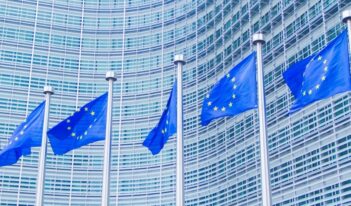
International regulatory cooperation agreements have not reached desired levels of effectiveness.
Regulatory cooperation figures prominently in trade negotiations around the world. Such cooperation undergirds the European Union (EU) Single Market and plays a large role in discussions as the United Kingdom works out its future relationship with the EU. The positive results of EU regulatory cooperation have prompted EU neighbors, through association agreements, to align with EU law to access the EU market.
Yet, despite impressive estimates of its potential benefits, other trading partners have set a low level of ambition for regulatory cooperation in EU free trade agreements. The results have been modest so far. The prospects for significant gains from regulatory cooperation are not guaranteed and may only materialize over the longer term as regulators develop the understanding, mutual reliance, and trust required to turn rosy estimates of potential gains from cooperation into reality.
The potential gains are many. Regulatory cooperation, particularly through the harmonization of laws or the adoption of mutual recognition or equivalence agreements, has many estimated benefits. It is seen as an effective way to reduce unnecessary regulatory divergences which represent “behind the border” barriers to trade. It offers efficiency gains for both businesses and the public sector if administrative costs entailed in duplicate testing and inspections are reduced. Businesses find it less costly and more conducive to economies of scale to comply with one set of rules and formalities across export markets.
Regulatory cooperation helps governments tackle cross-border externalities such as climate change and ensure that inputs along global supply chains respect domestic environmental, health, and safety standards. It can serve to level the playing field so that industrial actors do not locate to jurisdictions with lower regulatory requirements. For countries seeking accession to the EU, regulatory alignment is a condition of membership. For others, it is a means to access the EU single market and thus facilitate trade and growth.
The EU itself is the clearest example of regulatory convergence between sovereign states, with EU member states bound by law to eliminate regulatory differences that impede the free movement of people, goods, services, and capital. The system is not based on full harmonization. Rather, regulatory divergence is allowed provided that the mutual recognition principle is applied, such that goods marketed legally in one member state have access to other EU member state markets. The system relies on a supranational court, the European Court of Justice, to interpret the law, arbitrate, and resolve disputes.
Looking at results, regulatory barriers have been removed for over 80 percent of industrial products in the EU. Intra-EU trade in goods and services has grown from 27 percent relative to the size of EU gross domestic product (GDP) in 2004 to 33 percent in 2017. The economic benefits of the single market are estimated at 8.5 percent of EU GDP. Trade of products with harmonized rules exceeds trade of products which are traded under the mutual recognition principle.
Recognizing the benefits of harmonized regulations and looking either to accession or access to the EU market, EU neighbors have agreed to align with EU law in their respective agreements with the EU. The countries of the European Economic Area—Norway, Iceland, and Liechtenstein—and Switzerland have most fully aligned their laws to those of the EU internal market. Countries with EU Association Agreements— Ukraine, Moldova and Georgia, as well as neighboring countries in the Balkans and the Mediterranean—and those with Customs Unions such as Turkey, are at different stages of alignment and application of the law. The alignment is in one direction. The partners are not formally involved in the EU decision-making process and agree to respect the arbitration of the European Court of Justice.
Regulatory cooperation has also emerged as a key element in recently concluded “new generation” EU free trade agreements with South Korea, Canada, and Japan. It includes information exchange, adoption of good regulatory practices, and mutual recognition agreements in certain sectors.
It is too early to fully assess regulatory cooperation results of these agreements, but trade has expanded rapidly. For example, EU trade with South Korea grew at 5.7 percent per year on average over the seven years that the free trade agreement has been in force. Exports of goods from the EU to Korea have increased by about 60 percent from the period before application of the free trade agreement to the period after and strongly outperformed exports to Japan and Taiwan, the other regional trade partners of the EU.
In the first nine months of the application of the EU–Canada Comprehensive Economic and Trade Agreement, EU exports of goods to Canada increased by 7 percent. Trade has more than doubled with the Western Balkan region since 2007, with exports from the region having increased by 142 percent against a more modest increase of EU exports to the region of 84 percent. EU exports to and imports from Ukraine grew by 22 percent and 27 percent, respectively, in 2017. EU imports from the Mediterranean countries increased from €133.6 billion in 2015 to €148.3 billion in 2017.
It is difficult to separate the impact that regulatory cooperation has had on these trade flows. A comprehensive ex-post evaluation of the first years of implementation of the EU–Korea free trade agreement shows that non-tariff barriers have been reduced, including by changes in Korean law. But the study could not conclude anything causal about these legal changes and the regulatory cooperation provisions of the free trade agreement.
Expectations on potential impacts need to be tempered by the relatively limited scope and low level of ambition of the regulatory cooperation provisions under EU free trade agreements. They emphasize the regulatory autonomy of the parties and voluntary cooperation. There is no obligation either to harmonize laws or to pursue mutual recognition. They focus on goods which are diminishing in importance relative to services and, within the goods sector, they focus on conformity assessment, which represents a relatively small part of “behind-the-border” barriers to trade. These limitations have implications for the United Kingdom as it works out what type of relationship it wants with the EU post-Brexit.
EU–U.S. regulatory cooperation has also witnessed some of these limitations. Sectoral agreements including aviation, marine equipment, financial services, and organic farming agreements have shown positive results. Although important, these agreements do not add up to a strategic regulatory cooperation relationship, and horizontal agreements on regulatory cooperation—such as a 1998 mutual recognition agreement—have not generated expected results. As “rule-makers,” the two parties continue to find it difficult to recognize each other’s regulations and regulatory approaches. Even attempts at “soft” cooperation, such as examining the impact of trade in regulatory impact assessments, while having led to modification of both EU guidelines and a U.S. executive order, have not been followed up on in practice.
Voluntary unilateral alignment with EU regulations by companies and non-EU countries, the so-called “Brussels effect,” is taking place in chemical, waste, and data protection regulation, for example. Third countries see advantages in following EU models and multi-national companies find it less costly to align with one set of rules internationally. This voluntary alignment would seemingly diminish the need for formal regulatory cooperation agreements.
Before drawing any conclusions, however, more analytical work is needed to measure actual benefits, such as increased trade or reduced administrative costs of regulatory cooperation for both formal agreements and informal arrangements.
Given the resistance of many countries to give up regulatory autonomy and acknowledge supranational dispute settlement mechanisms, it is not certain that regulatory cooperation will be able to reach its full potential in coming years. Bilateral cooperation is often facilitated by agreement first on global standards in international organizations and is closely tied to respect for a rules-based international trade and investment system. The latter has come under strain in recent years.
China has been reticent to include regulatory cooperation in its trade agreements, although it is emerging as a global regulatory standard setter in areas such as information technology. This “China effect” may spread to other areas where China occupies a position of market dominance or chooses to set market access conditions for its domestic market. The deregulatory agenda of the Trump Administration, combined with its lukewarm appreciation of multilateral governance, may diminish the American role in global standard setting, at least in the short term.
The EU, with its continued commitment to multilateral organizations and to free trade agreements, will continue to play a strong role on the global regulatory cooperation stage. Confidence in globalization and international trade would be strengthened if other major “rule-makers” were to join this quest for high standards and global regulatory excellence.




